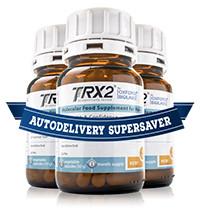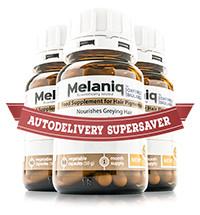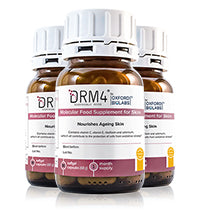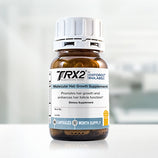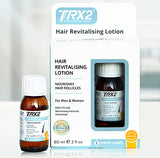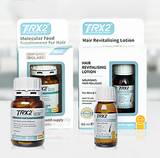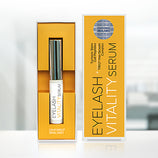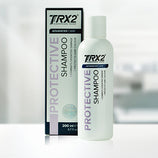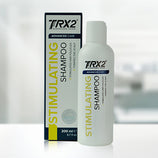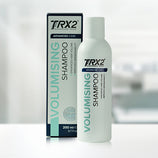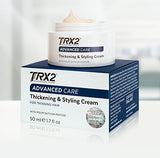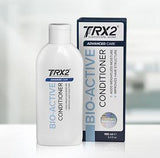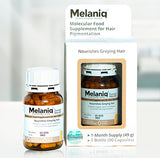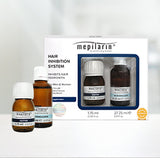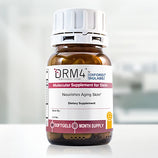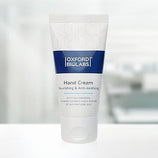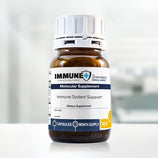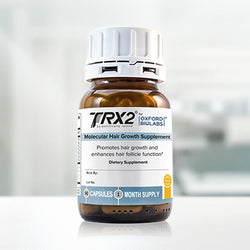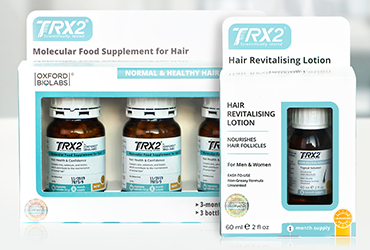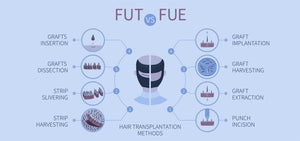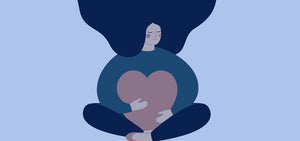Can Amino Acids Fight Hair Loss?
The use of amino acid supplements is all the rage nowadays. And why shouldn’t it be? After all, amino acids are the basic building blocks of protein and since the biomaterial of hair is mainly made up of proteins in particular keratin - it is not hard to believe how amino acids play a major part in preventing hair loss.
This article will show:
The basic hair structureThe phases of a normal hair cycle
Hair loss triggers
Role of amino acids in staving off hair loss
How do amino acids benefit hair?
The amino acids most essential for hair growth
- What foods are high in these amino acids?
- How much does one need?
The Basic Hair Structure
a. Hair Follicle and Hair Bulb
Hair sprouts from below the skin surface as a hair follicle. There is a bulb-shaped structure at the base of each hair follicle, termed as the hair bulb. This hair bulb consists of numerous sections of different cells that extend throughout the hair follicle and proliferate to form the hair shaft.
b. Hair Shaft
The hair shaft is the visible part of the hair on the head. It is composed of three layers:
- The outermost layer of dead, overlapping cells in a scale-like pattern is called the cuticle.
- Beneath the cuticle is the cortex - the major portion of the hair fibre mass, mostly consisting of keratin proteins, amino acids, and lipids - which form a protective coating around the hair.
- Internal to the cortex is a loosely-organised region called the medulla.
Another structural protein present in the hair shaft called collagen is also vital for hair health, vitality, and growth.
The Phases of a Normal Hair Cycle
The hair follicle progresses through three different phases of growth.
- First is the anagen phase, during which several thousand hair follicles can be seen sprouting on the scalp.
- Second is the catagen phase, the onset of which signals the end of the growth (anagen) phase. During this phase, the hairs go into a period of rest and plenty of keratin is formed.
- Telogen is the final phase of the hair cycle. This is when lots of hair starts shedding and the anagen phase resumes simultaneously.
For the hair to continue growing, the follicles should re-enter the anagen phase. Failure to do so results in more hair falling out than growing, over time leading to baldness.
Hair Loss Triggers
In spite of the fact that shedding a few hundred hairs daily is a normal natural phenomenon, hair loss becomes a concern when it is beyond what is labeled as “normal.” While nutritional factors influence the hair health directly, a plethora of factors can trigger accelerated hair loss; one of the most common ones being androgenic alopecia (AGA). Also referred to as male pattern hair loss, AGA occurs because of androgen overload in both men and women. The excess androgens cause hair follicles to reduce in size, therefore, hampering hair growth.
Other hair loss triggers include:
- Advanced age
Ageing decreases the levels of collagen close to the hair follicle stem cells. Collagen is a protein that makes the hair more supple and strong. So, a decrease in collagen will reduce the regeneration of hair follicles. Knowing how collagen deficiency or defect interferes with hair growth is important because some amino acids bond together to form the helical structure of the hair collagen. - Stress
- Sickness
- Overactive immune system such as due to alopecia areata
- Grave medical conditions like cancer and/or their treatment
- Artificial hair colouring and bleaching
- Hormonal changes such as due to pregnancy or menopause
- Psychological compulsion of pulling one’s hair
Role of Amino Acids in Staving Off Hair Loss
The importance of protein for hair growth has been known for decades. As aforementioned, amino acids assemble together to form protein - and hence - for hair - they can be referred to as keratin amino acids. In other words, it’s the amino acids that make up a protein molecule. So, if there aren't enough amino acids, hair will lack the protein required to promote its growth naturally.
A lack of amino acids will also yield a defective collagen, which can hinder healthy hair growth.
How do Amino Acids Benefit Hair?
Amino acids:
- Impart that appealing resilience, silkiness, and shine to your hair
- Show promise in adding volume to limp hair
- Neutralise the damaging effects of oxidative molecules generated by hair dying and bleaching
- Help stimulate collagen production
- Some can even cure baldness (see below)
The Amino Acids Most Essential for Hair Growth
The key amino acids beneficial for the health of hair are:
- Arginine
- Cysteine
- Cystine
- Glycine
- Lysine
- Methionine
- Proline
- Tyrosine
- Tryptophan
Unfortunately, the body cannot synthesise all amino acids, making them necessary to be taken through diet or in the form of supplements. Of the amino acids listed above, lysine, methionine, and tryptophan fall into the category of essential amino acids, and thus, must be taken through diet or supplemented otherwise.
1. Cysteine and Cystine
Cysteine is one of the most indispensable components of keratin. It represents about 10-17% of the amino acids in hair. Although the body can produce cysteine on its own, its synthesis relies on an essential amino acid named methionine.
Cysteine in supplements is generally in the form of N-acetyl-L-cysteine (NAC). NAC scavenges the highly inert molecules called free radicals by augmenting the levels of a potent antioxidant called glutathione. Hence, by combating the oxidative stress, L-cysteine can accelerate hair growth as well as increase the thickness of a hair fibre diameter. Another form of micronutrient named vitamin B6 also causes cysteine to assimilate into keratin, further boosting hair growth.
Another related amino acid derived from merging two cysteine molecules - known as Cystine – also has positive impacts on the health of hair. A 2014 study published in the Scientific World Journal showed that the addition of a supplement containing cysteine in combination with other amino acids greatly improved the hair quality. This also included a noticeable decline in the frequency of hair loss.
Richest dietary sources of cysteine include:
- Poultry
- Dairy
- Legumes
- Whole grains
- Broccoli
- Soybeans
The recommended daily intake (RDI) for cysteine in adults is 4.1 mg per kilogram of body weight.
2. Methionine
Methionine is the second most indispensable ingredient of keratin. This amino acid also plays a role in the formation of a precursor to collagen designated as pro-collagen.
This sulphur-containing amino acid can also fight the oxidative stress in the body, including the scalp, which can be the basis for hair loss in many people. Methionine can stimulate the blood flow to the hair follicles and scalp. This further promotes hair growth.
Some authors report that methionine also plays a role in the synthesis of melanin, a pigment that imparts the hair, skin, and eyes their natural colour. Its shortage causes premature greying of hair, as well as hair thinning whereas its supplementation may even reverse hair greying.
Conversely, low levels of methionine negatively affect the hair health and growth.
Since the human body is unable to produce this amino acid on its own, incorporating methionine in diet or taking it as a supplement is ideal for acquiring long, beautiful hair.
Richest food sources for methionine include:
- Fish
- Eggs
- Seeds
- Nuts
- Leafy greens
- Squash
- Broccoli
The recommended daily intake of methionine is 10.4 mg per kg of body weight.
3. L-lysine
This essential amino acid acquired through diet or supplements acts in different ways to benefit hair.
L-lysine displays a potential to keep hair attached to the skin. It is found in abundance in the inner portion of hair root where it gives the hair its shape and volume. A diet that is deficient in lysine causes the hair to become brittle, limp, thin, and eventually fall out.
L-lysine boosts the absorption of two vital micronutrients - zinc and iron - that by themselves are as important as the amino acid lysine for nourishing hair. To boot, lysine acts in synergy with vitamin C and another amino acid called proline, to help produce collagen. Collagen, owing to its hair-rejuvenating properties, makes the hair more elastic, stronger, and less prone to breakage. Lysine also helps to maintain the function of hair follicles.
Research shows that substitution of l-lysine for prolonged periods can combat hair loss and restore the beauty of the hair.

Richest dietary sources of lysine include:
- Parmesan cheese
- Lean beef
- Turkey
- Chicken
- Pork
- Seafood
- Nuts and seeds
- Eggs
- Beans and lentils
For adults, the recommended daily intake of lysine is 38 mg/kg of body weight. For women who are pregnant, the RDI is 51 mg/kg, and women who are breastfeeding, the RDI for L-lysine is 52 mg/kg.
4. Arginine
Treatments like hair coloring and bleaching can wreck the health of your hair via inducing oxidative damage. Besides contributing to the production of keratin, arginine use can also shield against this oxidative damage, and in turn, strengthen your hair and resist its shedding.
The body converts arginine into a chemical called nitric oxide. This chemical widens the blood vessels, including those supplying the scalp. This eases the flow of blood and nutrients to the hair follicles, boosting hair growth.
While the body adequately produces arginine, introducing the following natural sources of arginine can compensate for its shortage:
- Seafood
- Red meat
- Poultry
- Nuts and seeds
- Legumes
- Soybeans
There is no single standard dose of arginine supplements. WebMD recommends a daily dosage of 6 to 9 grams, which is variable depending on the health concern.
5. Proline
Similar to lysine, proline is also a precursor to collagen synthesis, thus, conferring long-term health benefits for hair.
The best dietary sources of proline include:
- Meat
- Eggs
- Dairy
- Broccoli
- Asparagus
- Avocado
- Spinach
- Soybeans
6. Glycine
Glycine is another amino acid that contributes to the triple-coiled structure of collagen, thereby, helping in the maintenance of hair follicle stem cells. This ensures faster hair growth.
Although the body can make Glycine on its own, incorporating the following Glycine-rich foods into one's diet will reap the added benefits of this amino acid:
- Bone broth - it is the soup or juice produced by simmering the bones, skin, and tendons of animals
- Vegetables like spinach, cauliflower, cabbage, kale, and pumpkin
- Fish
- Meat
- Dairy
- Soybeans
7. Tyrosine
Produced by the body naturally, tyrosine is responsible for generating melanin, a hair and skin pigment. It may also relax the nerves, assuaging anxiety, depression, insomnia and other stress-related issues that can compete with healthy hair growth.
Food sources rich in tyrosine include:
- Dairy
- Soy products
- Almonds
- Seafood
- Pumpkin seeds
8. Tryptophan
Tryptophan is an essential amino acid that serves as a precursor to the “feel-good” chemical of the brain called serotonin. Chronic stress alters the serotonin levels, which further compromises the body’s ability to respond to stressful situations. We know that stress is also the major culprit behind hair thinning and hair loss. Substituting tryptophan will not only boost serotonin and help cope with stress by calming the mind and nerves but it is also required for the synthesis of niacin (vitamin B3). Niacin, in turn, widens the blood vessels, stimulating the blood flow to the scalp that facilitates healthy hair growth.
The best dietary sources of tryptophan include:
- Dairy
- Cottage cheese
- Chocolate
- Red meat
- Eggs
- Seafood
- Poultry
- Sesame
- Oats
- Almonds
- Walnuts
- Peanuts
- Chickpeas
- Dried dates
- Sunflower and pumpkin seeds
- Buckwheat
The RDI for tryptophan is 12.5 mg per kg of body weight.
Summary
Amino acids are the key elements of diet conditioning to promote hair growth. It is of utmost importance that you consume the ones not produced by the body either through diet or in the form of a supplement to maintain the health of your hair.
